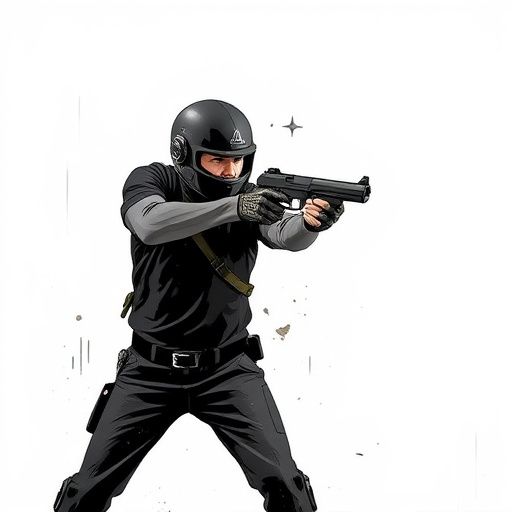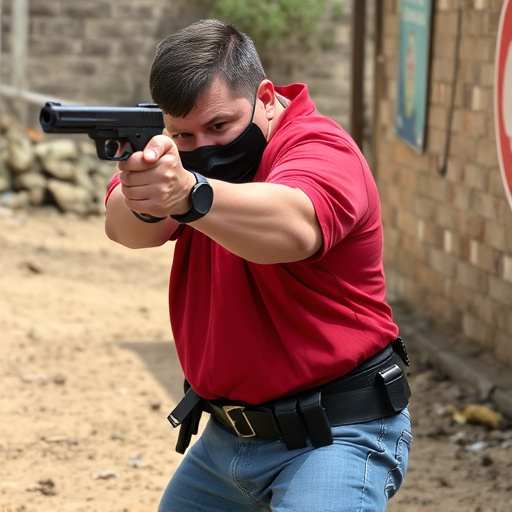Unveiling Optimal Self-Defense Strategies: Current Spread Analysis for Best Value Stun Guns
Maximizing the effectiveness of a best value stun gun for self-defense requires understanding electr…….
Maximizing the effectiveness of a best value stun gun for self-defense requires understanding electrical current spread patterns. By knowing how electricity flows through the body, users can deliver optimal shock levels to quickly incapacitate an assailant. Choosing a stun gun with precise control over voltage output, pulse width, and electrode configuration ensures efficient energy distribution to crucial nervous system centers. Proper training, regular maintenance, and strategic targeting of pressure points like the sides of the neck, thighs, and shins are essential for safe and effective deployment.
Electrical current spread pattern analysis is a critical aspect of understanding how stun guns work and optimizing their use for self-defense. This comprehensive guide delves into the science behind these patterns, exploring factors influencing electric current flow. From the physics of shock to practical deployment strategies, we dissect what makes a stun gun effective as a best value self-defense tool. Discover key insights on maximizing impact while minimizing risks, ensuring your safety and peace of mind.
- Understanding Electrical Current Spread Patterns for Optimal Self-Defense with Stun Guns
- Factors Influencing the Spread of Electric Current: A Comprehensive Analysis
- Practical Applications and Best Practices for Effective Stun Gun Deployment
Understanding Electrical Current Spread Patterns for Optimal Self-Defense with Stun Guns

Understanding Electrical Current Spread Patterns is paramount for maximizing the effectiveness of a stun gun in self-defense scenarios. By studying how electricity flows through the body, users can gain insights into delivering optimal shock levels to incapacitate an assailant quickly and safely. This knowledge ensures that the energy from a stun gun is applied efficiently, targeting crucial nervous system centers without causing severe or permanent damage.
For best value in self-defense with stun guns, it’s essential to consider the electrical current spread pattern. Different models and designs may exhibit varied patterns due to factors like voltage output, pulse width, and electrode configuration. Users should choose a stun gun that offers precise control over these parameters, allowing them to adapt to various situations. Such customization enables individuals to deploy their stun guns with confidence, ensuring they have the best chance at neutralizing threats while adhering to safety guidelines for responsible self-defense.
Factors Influencing the Spread of Electric Current: A Comprehensive Analysis

The spread of electric current is influenced by a myriad of factors, each playing a critical role in shaping the pattern and efficiency of its flow. One key aspect to consider is the conductive properties of the medium through which the current travels, such as the material’s electrical conductivity and resistance. In the context of self-defense tools like the best value stun gun, understanding these dynamics becomes paramount. Higher conductivity materials allow for smoother and faster current transmission, ensuring swift and effective incapacitation.
Additionally, the geometry and layout of the conductive paths significantly impact current flow. The shape and size of conductors, as well as their arrangement, affect how electric current distributes itself. For instance, in a stun gun’s design, flat, wide electrodes may be used to maximize surface area contact with the target, thereby enhancing the intensity and spread of the electric shock. Environmental conditions, including temperature and pressure, also exert influence by altering the behavior of both conductors and insulators, further complicating but ultimately enriching the analysis of current spread patterns.
Practical Applications and Best Practices for Effective Stun Gun Deployment

In practical terms, understanding the spread pattern of electrical current can significantly enhance the effectiveness of self-defense tools like stun guns. The best value stun gun for self-defense should not only deliver a powerful shock but also ensure the current spreads widely enough to neutralize an attacker effectively. This is crucial in scenarios where attackers may try to block or mitigate the impact of the shock, such as wearing protective clothing or trying to grab the stun gun. By optimizing the spread pattern, users can increase the chances of disabling their assailants, giving them precious time to escape or summon help.
When deploying a stun gun, best practices involve positioning it strategically for maximum current dispersion. This often means targeting nerve centers and pressure points on the body, such as the sides of the neck, thighs, and shins. Proper training in stun gun usage is essential to ensure users can accurately place the device while also maintaining their balance and safety. Additionally, regular maintenance and testing of stun guns are vital to guarantee optimal performance and current delivery, ensuring the best value for self-defense investment.
Electrical current spread pattern analysis is a critical aspect of enhancing personal safety through stun gun self-defense. By understanding how electric current spreads, users can employ best practices for effective deployment, ensuring the best value in self-defense tools. Factors like distance, contact points, and environmental conditions significantly influence these patterns, making comprehensive knowledge essential. Armed with this insight, individuals can make informed decisions to protect themselves, leveraging the power of stun guns with precision and confidence.


